Meet 30+ animals that start with J. From the majestic Jaguar to the agile Jackrabbit, this exploration promises an enriching experience.
You can see related article info about animals with fun facts by Click Here.
Join us in uncovering the unique characteristics, habitats, and intriguing facts about these remarkable animals that add diversity to our planet.
Animals that Start with J
- Jaguar
- Jellyfish
- Jackrabbit
- Jaybird
- Jerboa
- Japanese Chin (dog breed)
- Javan Rhino
- Japanese Macaque (Snow Monkey)
- Jabiru (large stork)
- Jackal
- Junebug (refers to various types of beetles)
- Jackfish
- Jellybean Tetra (fish)
- Javan Hawk-Eagle
- Javelina (also known as collared peccary)
- Japanese Beetle
- Jardine’s Parrot
- Japanese Bobtail (cat breed)
- Jentink’s Duiker (antelope)
- Jambu Fruit Dove
- Junglefowl
- Jutland Horse
- Jacamar (tropical bird)
- Jerdon’s Courser (bird)
- Japanese Spider Crab
- Jackdaw
- Java Sparrow
- Jigglypuff (not a real animal, but a fictional Pokémon)
- Johnston’s Crocodile
- Jerusalem Cricket
- Javanese Cattle
Jabiru

| Scientific Name | Jabiru mycteria |
| Special Habit | Tall wading bird, distinctive long bill |
| Place of Origin | Americas, from Mexico to Argentina |
| Size | Large, with a wingspan up to 2.8 meters |
| Commonly Found In | Wetlands, swamps, and lowland areas |
| Lifespan | 30 to 40 years |
| Diet | Primarily fish, also amphibians, reptiles, and insects |
| Reproduction | Build large stick nests, lay 2 to 5 eggs |
| Conservation Status | Least Concern (IUCN Red List) |
The Jabiru is notable for its impressive size and is often seen standing in shallow water, patiently waiting for prey to come within reach of its bill.
Jacana

| Scientific Name | Various species within Jacanidae family |
| Special Habit | Wading bird with long toes adapted for walking on floating vegetation |
| Place of Origin | Tropical regions, found on every continent except Antarctica |
| Size | Small to medium-sized, varies among species |
| Commonly Found In | Marshes, ponds, and shallow lakes |
| Lifespan | Around 5 to 8 years |
| Diet | Insects, small invertebrates |
| Reproduction | Polyandrous mating system, males care for eggs and chicks |
| Conservation Status | Varied based on species, some are of Least Concern |
Jacanas are known for their unique parenting arrangement, where the males take on the responsibility of incubating eggs and caring for the chicks.
Jack Crevalle
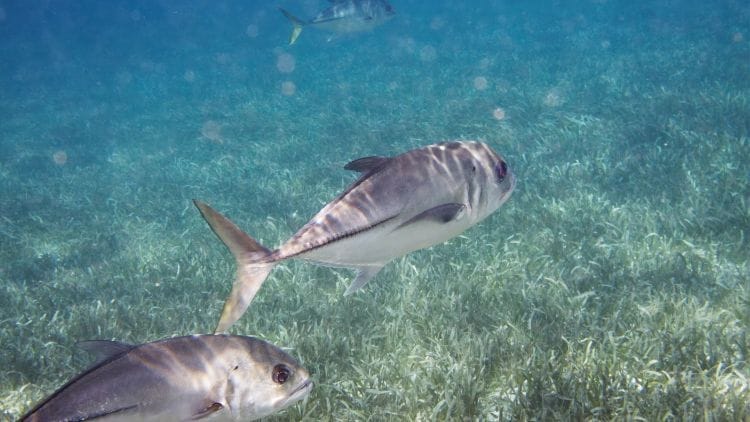
| Scientific Name | Caranx hippos |
| Special Habit | Powerful and fast-swimming fish |
| Place of Origin | Coastal waters of both sides of the Atlantic |
| Size | Medium to large, can reach up to 1 meter in length |
| Commonly Found In | Shallow coastal waters, estuaries |
| Lifespan | Around 7 to 10 years |
| Diet | Carnivorous, feeding on smaller fish |
| Reproduction | Egg-laying species with external fertilization |
| Conservation Status | Not evaluated (data deficient) |
Jack Crevalle is known for its aggressive feeding habits, often forming schools and herding smaller fish to feed on.
Jack Russells

| Scientific Name | Canis lupus familiaris (domestic dog breed) |
| Special Habit | Energetic, agile, and intelligent |
| Place of Origin | England |
| Size | Small to medium-sized |
| Commonly Found In | Domestic settings, companion animals |
| Lifespan | 13 to 16 years |
| Diet | Standard dog diet, balanced nutrition |
| Reproduction | Breeding within domestic settings |
| Conservation Status | Not applicable, domesticated breed |
Jack Russells are known for their boundless energy and are often used in various dog sports due to their agility and intelligence.
Jack-Chi

| Scientific Name | Not applicable, hybrid dog breed |
| Special Habit | Small-sized, a mix of Jack Russell Terrier and Chihuahua |
| Place of Origin | Hybrid breed, not naturally occurring in the wild |
| Size | Small, influenced by genetics |
| Commonly Found In | Domestic settings as a companion animal |
| Lifespan | 12 to 16 years |
| Diet | Standard dog diet, balanced nutrition |
| Reproduction | Breeding between Jack Russell Terrier and Chihuahua parents |
| Conservation Status | Not applicable, domesticated hybrid |
Jack-Chis inherit a delightful blend of the playful nature of Jack Russells and the tiny charm of Chihuahuas, making them affectionate companions.
Jackabee
| Scientific Name | Canis lupus familiaris (domestic dog breed) |
| Special Habit | Energetic, affectionate, and intelligent |
| Place of Origin | Hybrid breed, a mix of Jack Russell Terrier and Beagle |
| Size | Small to medium-sized |
| Commonly Found In | Domestic settings as a companion animal |
| Lifespan | 12 to 16 years |
| Diet | Standard dog diet, balanced nutrition |
| Reproduction | Breeding between Jack Russell Terrier and Beagle parents |
| Conservation Status | Not applicable, domesticated hybrid |
Jackabees inherit the keen sense of smell from Beagles and the energetic nature of Jack Russells, making them excellent family pets with a love for play and exploration.
Jackal
| Scientific Name | Various species within Canidae family |
| Special Habit | Omnivorous scavenger with a distinct howling vocalization |
| Place of Origin | Africa, Asia, and parts of Europe |
| Size | Small to medium-sized, varies among species |
| Commonly Found In | Savannahs, deserts, and grasslands |
| Lifespan | Around 8 to 10 years |
| Diet | Opportunistic, feeding on small mammals, birds, and carrion |
| Reproduction | Monogamous breeding pairs, usually one litter per year |
| Conservation Status | Varies based on species, some are of Least Concern |
Jackals are known for their haunting howls, which they use to communicate with each other over long distances.
Jackdaw
| Scientific Name | Corvus monedula |
| Special Habit | Sociable and highly adaptable, often seen in urban areas |
| Place of Origin | Europe, Asia, and North Africa |
| Size | Small to medium-sized |
| Commonly Found In | Urban areas, farmlands, and open woodlands |
| Lifespan | Around 5 to 7 years |
| Diet | Omnivorous, feeding on insects, seeds, and human scraps |
| Reproduction | Monogamous, nests in cavities or buildings |
| Conservation Status | Least Concern (IUCN Red List) |
Jackdaws are known for their intelligence and have been observed using tools to obtain food.
Jackrabbit
| Scientific Name | Various species within Lepus genus |
| Special Habit | Swift and agile, adapted for leaping and running |
| Place of Origin | North and Central America, parts of South America |
| Size | Large, with long hind legs for powerful leaps |
| Commonly Found In | Grasslands, deserts, and open areas |
| Lifespan | Around 5 to 7 years |
| Diet | Herbivorous, mainly grazing on grasses and plants |
| Reproduction | Prolific breeders, with multiple litters per year |
| Conservation Status | Varies based on species, some are of Least Concern |
Jackrabbits are not actually rabbits but are hares, characterized by their longer legs and ears.
Jackson’s Chameleon
| Scientific Name | Trioceros jacksonii |
| Special Habit | Arboreal, slow-moving, and known for distinctive three horns |
| Place of Origin | East Africa, native to Kenya and Tanzania |
| Size | Small to medium-sized |
| Commonly Found In | Montane forests and coastal woodlands |
| Lifespan | Around 5 to 10 years |
| Diet | Insects and small invertebrates |
| Reproduction | Live-bearing, with relatively small litters |
| Conservation Status | Not evaluated (data deficient) |
Jackson’s Chameleons are known for their unique ability to independently move their eyes, providing excellent depth perception.
Jagdterrier
| Scientific Name | Canis lupus familiaris (domestic dog breed) |
| Special Habit | Energetic, versatile, and skilled in hunting |
| Place of Origin | Germany |
| Size | Small to medium-sized |
| Commonly Found In | Varied environments, often used for hunting |
| Lifespan | 10 to 12 years |
| Diet | Standard dog diet, high in protein |
| Reproduction | Breeding within domestic settings |
| Conservation Status | Not applicable, domesticated breed |
Jagdterriers are known for their tenacity in hunting, making them excellent working dogs, particularly in pursuits like tracking and retrieving.
Jaguar
| Scientific Name | Panthera onca |
| Special Habit | Excellent swimmer and proficient tree climber |
| Place of Origin | Americas, ranging from rainforests to grasslands |
| Size | Large and robust |
| Commonly Found In | Dense rainforests, swamps, and grasslands |
| Lifespan | 12 to 15 years |
| Diet | Carnivorous, preying on various mammals |
| Reproduction | Solitary, cubs born after a gestation of around 93 to 105 days |
| Conservation Status | Near Threatened (IUCN Red List) |
Jaguars have exceptionally strong jaws and are known for their ability to bite through the skulls or shells of their prey with ease.
Jaguarundi Cat

| Scientific Name | Puma yagouaroundi |
| Special Habit | Diurnal (active during the day), long and slender body |
| Place of Origin | Southern North America, Central America, and South America |
| Size | Medium-sized, resembling a weasel |
| Commonly Found In | Various habitats, from dry forests to swamps |
| Lifespan | Around 15 years |
| Diet | Omnivorous, feeding on small mammals, birds, and insects |
| Reproduction | Typically one to four kittens per litter |
| Conservation Status | Least Concern (IUCN Red List) |
Jaguarundi cats are known for their vocalizations, including a variety of chirps, whistles, and meows.
Jamaican Boa
| Scientific Name | Epicrates subflavus |
| Special Habit | Arboreal and nocturnal, often found in trees |
| Place of Origin | Jamaica |
| Size | Medium to large, with a robust body |
| Commonly Found In | Forested areas and coastal regions |
| Lifespan | Around 15 to 20 years |
| Diet | Carnivorous, preying on birds and small mammals |
| Reproduction | Ovoviviparous, giving birth to live young |
| Conservation Status | Critically Endangered (IUCN Red List) |
The Jamaican Boa is the largest snake native to Jamaica and plays a crucial role in maintaining ecological balance by controlling rodent populations.
Jamaican Iguana
| Scientific Name | Cyclura collei |
| Special Habit | Herbivorous, predominantly ground-dwelling |
| Place of Origin | Jamaica |
| Size | Large, with a distinct spiny appearance |
| Commonly Found In | Dry limestone forests and rocky habitats |
| Lifespan | Around 10 to 15 years |
| Diet | Herbivorous, feeding on leaves, flowers, and fruits |
| Reproduction | Oviparous, laying eggs in nests |
| Conservation Status | Critically Endangered (IUCN Red List) |
The Jamaican Iguana was once considered extinct but was rediscovered in 1990, sparking conservation efforts to protect and reintroduce the species to its native habitat.
Japanese Bantam Chicken
| Scientific Name | Gallus gallus domesticus (domestic chicken) |
| Special Habit | Ornamental breed, small size, distinct appearance |
| Place of Origin | Japan |
| Size | Small and compact |
| Commonly Found In | Domesticated settings, ornamental gardens |
| Lifespan | 5 to 10 years |
| Diet | Omnivorous, standard chicken diet |
| Reproduction | Lays eggs, commonly used for ornamental purposes |
| Conservation Status | Not applicable, domesticated breed |
Japanese Bantam Chickens are known for their friendly and docile nature, making them popular choices for backyard flocks and as pets.
Japanese Beetle

| Scientific Name | Popillia japonica |
| Special Habit | Herbivorous, feeding on a variety of plants |
| Place of Origin | Japan (introduced to North America) |
| Size | Small to medium-sized beetle |
| Commonly Found In | Gardens, lawns, and agricultural fields |
| Lifespan | 1 year (from larva to adult) |
| Diet | Feeds on plant foliage, causing damage to crops |
| Reproduction | Complete metamorphosis, egg, larva, pupa, and adult stages |
| Conservation Status | Considered a pest in some regions |
Japanese Beetles are easily recognizable by their metallic green and copper-colored bodies, but their voracious appetite for plants makes them a nuisance for gardeners.
Japanese Chin
| Scientific Name | Canis lupus familiaris (domestic dog breed) |
| Special Habit | Companion breed, characterized by a distinctive pushed-in face |
| Place of Origin | Japan |
| Size | Small and delicate |
| Commonly Found In | Domestic settings, often kept as a lap dog |
| Lifespan | 10 to 12 years |
| Diet | Standard dog diet, may require a small-sized portion |
| Reproduction | Breeding within domestic settings |
| Conservation Status | Not applicable, domesticated breed |
Japanese Chin dogs were originally bred to be companions for Japanese nobility and are known for their elegant appearance and affectionate nature.
Japanese Macaque
| Scientific Name | Macaca fuscata |
| Special Habit | Highly adaptable, lives in various habitats |
| Place of Origin | Japan (native to the Japanese archipelago) |
| Size | Medium-sized, with a distinctive red face |
| Commonly Found In | Forested areas, hot springs, and urban settings |
| Lifespan | 20 to 30 years |
| Diet | Omnivorous, feeding on fruits, seeds, insects, and small vertebrates |
| Reproduction | Typically gives birth to a single offspring |
| Conservation Status | Least Concern (IUCN Red List) |
Japanese Macaques are known for their cultural behaviors, including washing food in water before eating, and their adaptability to cold climates, being the only non-human primates known to live in snowy areas.
Japanese rat snake
| Scientific Name | Elaphe climacophora |
| Special Habit | Arboreal and terrestrial, nocturnal |
| Place of Origin | Japan |
| Size | Medium to large, slender body |
| Commonly Found In | Forested areas and rural landscapes |
| Lifespan | 10 to 15 years |
| Diet | Carnivorous, feeding on rodents, birds, and eggs |
| Reproduction | Oviparous, laying eggs in hidden locations |
| Conservation Status | Not evaluated (data deficient) |
Japanese Rat Snakes play a crucial role in controlling rodent populations and are often considered beneficial for maintaining ecological balance.
Japanese Spitz
| Scientific Name | Canis lupus familiaris (domestic dog breed) |
| Special Habit | Companion breed, known for its fluffy white coat |
| Place of Origin | Japan |
| Size | Small to medium-sized |
| Commonly Found In | Domestic settings, popular as a family pet |
| Lifespan | 10 to 16 years |
| Diet | Standard dog diet, adapted for small breeds |
| Reproduction | Breeding within domestic settings |
| Conservation Status | Not applicable, domesticated breed |
Japanese Spitz dogs are renowned for their friendly and sociable nature. Despite their fox-like appearance, they are affectionate and make excellent companions.
Japanese Squirrel
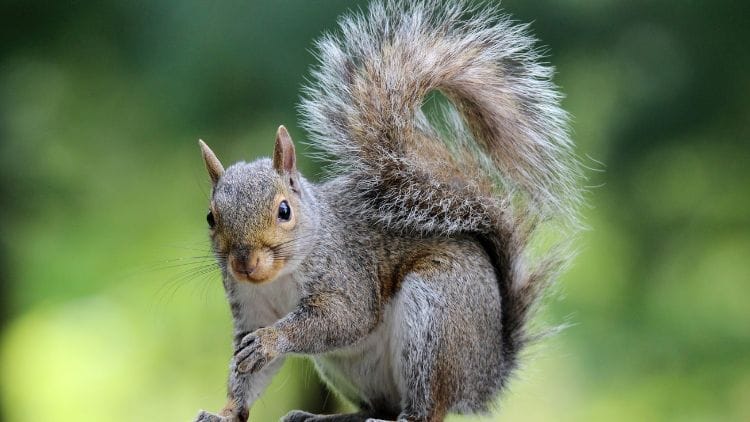
| Scientific Name | Sciurus lis (species may vary) |
| Special Habit | Arboreal, spends much of its time in trees |
| Place of Origin | Japan |
| Size | Small and agile |
| Commonly Found In | Forested areas and urban parks |
| Lifespan | 5 to 10 years |
| Diet | Herbivorous, feeds on nuts, seeds, and fruits |
| Reproduction | Gives birth to multiple offspring |
| Conservation Status | Not evaluated (species-specific) |
Japanese Squirrels are known for their acrobatic abilities in trees and are recognized by their bushy tails. They play a vital role in seed dispersal, contributing to forest regeneration.
Japanese Terrier
| Scientific Name | Canis lupus familiaris (domestic dog breed) |
| Special Habit | Companion breed, known for its friendly and lively demeanor |
| Place of Origin | Japan |
| Size | Small and compact |
| Commonly Found In | Domestic settings, often kept as a family pet |
| Lifespan | 10 to 12 years |
| Diet | Standard dog diet, adapted for small breeds |
| Reproduction | Breeding within domestic settings |
| Conservation Status | Not applicable, domesticated breed |
Japanese Terriers are spirited and energetic dogs, making them excellent companions for active families. They have a smooth and short coat that is easy to groom.
Javan Leopard
| Scientific Name | Panthera pardus melas |
| Special Habit | Arboreal and terrestrial, highly adaptable |
| Place of Origin | Java, Indonesia |
| Size | Medium to large, distinctive black coat with spots |
| Commonly Found In | Forested areas of Java, including national parks |
| Lifespan | 12 to 17 years (in captivity) |
| Diet | Carnivorous, preying on various mammals and birds |
| Reproduction | Gestation period of approximately 90 to 105 days |
| Conservation Status | Critically Endangered (IUCN Red List) |
Javan Leopards are one of the most endangered big cat species, facing threats such as habitat loss and poaching. Conservation efforts are crucial for their survival.
Javan Rhinoceros
| Scientific Name | Rhinoceros sondaicus |
| Special Habit | Terrestrial, primarily inhabits dense lowland rainforests |
| Place of Origin | Java and Vietnam |
| Size | Large, distinctive single horn on the snout |
| Commonly Found In | Dense rainforests, historically found in various habitats |
| Lifespan | 30 to 40 years |
| Diet | Herbivorous, feeding on a variety of plants |
| Reproduction | Slow reproductive rate, with a gestation period of 15 to 16 months |
| Conservation Status | Critically Endangered (IUCN Red List) |
Javan Rhinoceroses are the rarest rhino species, and efforts to protect and conserve their remaining populations are crucial for the species’ survival.
Javanese
| Scientific Name | Felis catus (domestic cat breed) |
| Special Habit | Domesticated, kept as a companion |
| Place of Origin | Java, Indonesia (origin may vary) |
| Size | Small to medium-sized |
| Commonly Found In | Domestic settings, often as a beloved pet |
| Lifespan | 12 to 18 years |
| Diet | Carnivorous, typical cat diet |
| Reproduction | Breeding within domestic settings |
| Conservation Status | Not applicable, domesticated breed |
Javanese cats are known for their affectionate nature and sleek, silky coats. They are vocal and enjoy interacting with their human companions.
Jellyfish
| Scientific Name | Various species within class Scyphozoa, Cubozoa, and Hydrozoa |
| Special Habit | Aquatic, drifting with ocean currents |
| Place of Origin | Found in oceans worldwide |
| Size | Varies from tiny to large, depending on the species |
| Commonly Found In | Oceans, seas, and some freshwater environments |
| Lifespan | Varies among species, ranging from a few hours to several months |
| Diet | Carnivorous, feeding on small fish and plankton |
| Reproduction | Alternation of generations, involving both sexual and asexual phases |
| Conservation Status | Not individually assessed (varies by species) |
Jellyfish have been around for millions of years and are considered one of the oldest living creatures. Their mesmerizing bell-shaped bodies are a marvel of marine life.
Jerboa
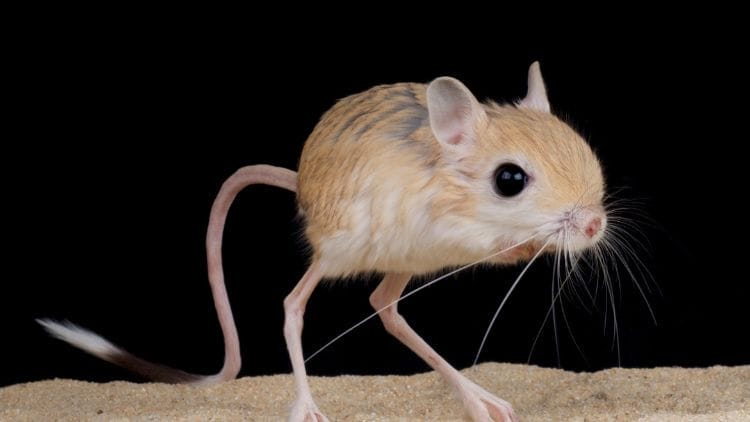
| Scientific Name | Various species within family Dipodidae |
| Special Habit | Terrestrial, adapted for hopping on hind limbs |
| Place of Origin | Found in Asia and Northern Africa |
| Size | Small to medium-sized, with long hind limbs |
| Commonly Found In | Arid and desert regions, grasslands |
| Lifespan | 2 to 6 years |
| Diet | Herbivorous, consuming seeds, plants, and insects |
| Reproduction | Give birth to litters of 2 to 6 offspring |
| Conservation Status | Varies by species, some are of Least Concern |
Jerboas are known for their incredible jumping ability, covering distances of up to 3 meters in a single leap. Their long tails provide balance during these jumps.
Jewel Beetle
| Scientific Name | Various species within family Buprestidae |
| Special Habit | Arboreal, found on trees and woody plants |
| Place of Origin | Worldwide, diverse habitats depending on species |
| Size | Small to medium-sized, often with iridescent colors |
| Commonly Found In | Forests, woodlands, and urban areas |
| Lifespan | Several weeks to a few months, depending on the species |
| Diet | Larvae feed on wood, adults may feed on nectar and pollen |
| Reproduction | Lay eggs on or near host plants, larvae bore into wood |
| Conservation Status | Varies by species, some are of Least Concern |
Jewel Beetles are admired for their striking colors and iridescence. Some species have been used in traditional jewelry-making in certain cultures.
John Dory
| Scientific Name | Zeus faber |
| Special Habit | Demersal, found near the seabed |
| Place of Origin | Coastal areas of Europe and Africa |
| Size | Medium to large |
| Commonly Found In | Shallow, sandy, and rocky bottoms of coastal waters |
| Lifespan | Up to 12 years |
| Diet | Carnivorous, preying on fish and invertebrates |
| Reproduction | Spawns adhesive eggs, no parental care |
| Conservation Status | Not assessed (commercially harvested) |
John Dory is known for its distinct appearance with a dark spot on its side, which is believed to confuse prey. It is often sought after for its delicious white and mild-flavored flesh.
Jonah Crab
| Scientific Name | Cancer borealis |
| Special Habit | Bottom-dwelling, benthic lifestyle |
| Place of Origin | Western Atlantic, from Canada to North Carolina |
| Size | Medium to large, with a carapace width of up to 9 inches |
| Commonly Found In | Continental shelf and slope, sandy and muddy substrates |
| Lifespan | Up to 10 years |
| Diet | Omnivorous, scavenging on small organisms and detritus |
| Reproduction | Mating occurs during the shedding of the exoskeleton |
| Conservation Status | Not assessed (commercially harvested) |
Jonah Crabs are an important commercial species and are often caught for their delicious meat. They are known for their reddish-brown coloration and spiky appearance.
Joro Spider
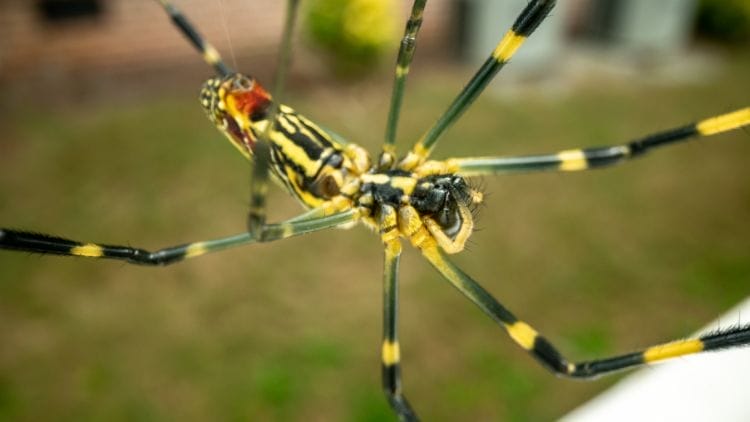
| Scientific Name | Nephila clavata |
| Special Habit | Orb-weaving, building large webs to catch prey |
| Place of Origin | Asia, particularly in Japan and Korea |
| Size | Large, females can have a body length of over 1 inch |
| Commonly Found In | Forests, gardens, and rural areas |
| Lifespan | Typically one year, influenced by environmental factors |
| Diet | Carnivorous, capturing insects in their webs |
| Reproduction | Female produces large egg sacs, often laid in vegetation |
| Conservation Status | Not assessed (common in their habitat) |
Joro Spiders are known for their intricate and large webs, which can measure several feet in diameter. Despite their size, they are harmless to humans.
Josephoartigasia monesi
| Scientific Name | Josephoartigasia monesi |
| Special Habit | Extinct, prehistoric rodent with massive size |
| Place of Origin | South America, lived during the Pliocene epoch |
| Size | One of the largest rodents ever, estimated to weigh over a ton |
| Commonly Found In | Fossils found in Uruguay |
| Lifespan | Extinct |
| Diet | Herbivorous, likely consumed plants and vegetation |
| Reproduction | Extinct species, reproductive methods unknown |
| Conservation Status | Extinct |
Josephoartigasia monesi is often considered the largest rodent that ever lived, dwarfing even modern-day capybaras. Its massive size is inferred from fossil remains.
Jumping Spider
| Scientific Name | Various species within family Salticidae |
| Special Habit | Agile and active hunters, known for their jumping ability |
| Place of Origin | Worldwide, diverse habitats ranging from forests to homes |
| Size | Small to medium-sized, with a compact and robust body |
| Commonly Found In | Varied habitats, including gardens, shrubs, and indoors |
| Lifespan | Several months to a few years, depending on the species |
| Diet | Carnivorous, preying on insects and other spiders |
| Reproduction | Mating involves intricate courtship dances |
| Conservation Status | Not assessed (common and widespread) |
Jumping Spiders have excellent vision and are capable of intricate courtship displays. They use silk for safety lines and to build small retreats.
Jungle Carpet Python
| Scientific Name | Morelia spilota cheynei |
| Special Habit | Arboreal, spending time in trees and branches |
| Place of Origin | Northern Australia and New Guinea |
| Size | Medium to large, adults can reach lengths of 5 to 9 feet |
| Commonly Found In | Rainforests, woodlands, and coastal areas |
| Lifespan | Up to 20 years in captivity |
| Diet | Carnivorous, preying on small mammals and birds |
| Reproduction | Oviparous, laying eggs in clutches |
| Conservation Status | Not assessed (common in their habitat) |
Jungle Carpet Pythons are known for their vibrant and striking color patterns, resembling the appearance of a lush jungle. They are popular in the reptile pet trade.
Junglefowl
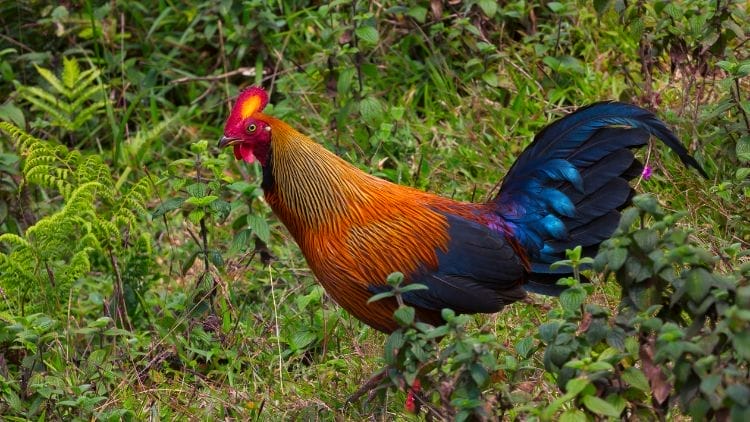
| Scientific Name | Gallus genus (various species) |
| Special Habit | Ground-dwelling, foraging for food on the forest floor |
| Place of Origin | Southeast Asia, including India, Thailand, and Malaysia |
| Size | Medium-sized, with males generally larger than females |
| Commonly Found In | Dense forests, grasslands, and agricultural areas |
| Lifespan | 4 to 8 years in the wild |
| Diet | Omnivorous, feeding on seeds, insects, fruits, and small animals |
| Reproduction | Oviparous, laying clutches of eggs in hidden nests |
| Conservation Status | Not assessed (some species may face threats in specific regions) |
Junglefowl are considered the ancestors of domestic chickens. The male Junglefowl is known for its vibrant plumage and distinctive crowing, which has influenced the rooster’s image in various cultures.
Wrapping Up
As we conclude our exploration of over 30 animals that start with J, we’ve witnessed the incredible variety that nature offers.
This journey serves as a reminder of the awe-inspiring biodiversity that surrounds us. It encourages a continued appreciation for the wonders of the animal kingdom.


You May Also Read